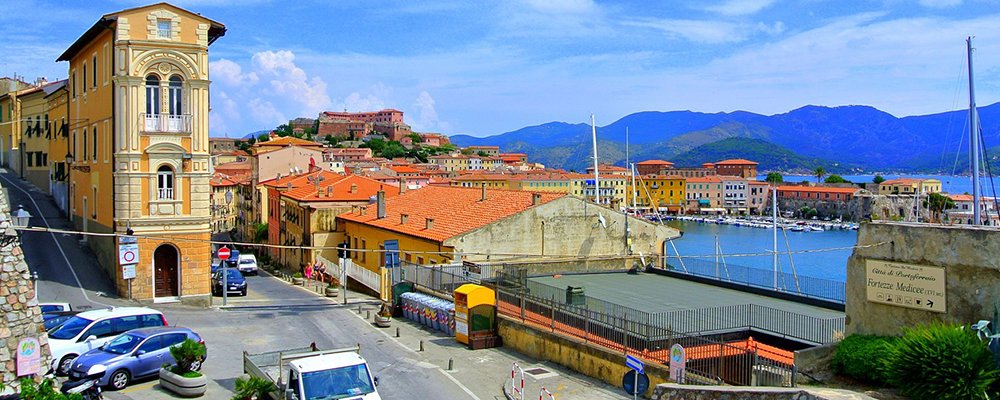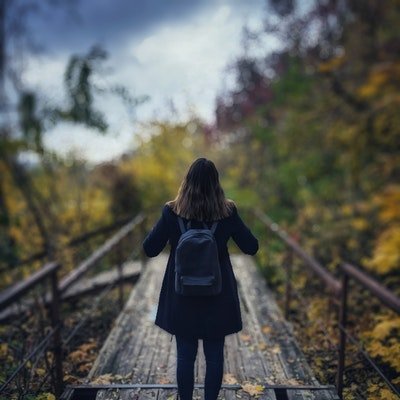The largest island in the Tyrrhenian Sea's Tuscan Archipelago National Park, Isola d'Elba, will mellow out the soul and rejuvenate the body. Because of its unique geological form, it's considered an open-air laboratory for botanists, geologists, and naturalists. For the holiday-maker, it's a sun-worshipping playground for splashing in crystal clear water and strolling stunning beaches. The climate is heavenly all year round, and the culture of island life is juxtaposed with Tuscan nuances.
As pretty as a picture, it’s an island with a long history dating back to the Stone Age. In the 5th Century, Elba was named Aethalia (flame) by the Greeks for the constant stream of fire rising from ovens cooking iron—the island's rich mineral deposits would make it ripe to be fought over for centuries—Romans, barbarians, pirates of which the most famous 'Il Barbarossa' led a Turkish fleet, the Spanish, and the Grand Duchy of Tuscany; all wanted Isola d'Elba for its rich minerals. The remnants of these tumultuous years can be seen in old wonders such as the ancient millstone in Cavoli, the old granite quarry ‘The Grottarelle,' the 'Mill of Moncione San Piero,' the 'Arsenal of the Galeazze Portoferraio,' and the impenetrable fortress built by Cosimo I de' Medici, dotted around the island. Isola d'Elba is also famous for being the place of exile for Napoleon Bonaparte from 1814 to 1815 after he was forced to abdicate his throne.

The island is a patchwork quilt of seven municipalities, each with its own unique characteristics, culture, and traditions. The understated island's capital, Portoferraio, greets visitors at the port with a colorful vision of houses stacked up like dominoes resting on a hillside surrounded on three sides by the ocean. Portoferraio's charm hides behind the bustling commercial hub, and vibrant port area in its old windy streets closeted inside the fortress walls where footsteps echo from the past and rustic red roofs shelter local inhabitants. Boats bob in the bay, and foreigners cavort on luxury yachts. Chatty visitors fill fish restaurants, lounge bars, and boutiques that line the dock in an eclectic mix basking under a Tuscan sun.
If you could dream up the ultimate Italian island village, Porto Azzurro would be it. Affectionately referred to as the 'living room' of the island, Porto Azzurro was named 'Porto Longone' until 1947. The main hub is Piazza Matteotti, where the nightlife is dynamic in the summer months, and concerts are held. Half an hour outside town, the Sanctuary of the Madonna di Monserrato, built in 1606, sits on a rocky outcrop in a serene valley smothered in cypress trees. The building is home to a legendary painting of the Madonna on a block of granite believed to have been discovered by the Marciana people on the very spot of the sanctuary. The story goes that despite being carried to a new church lower down in the valley, it mysteriously disappeared and was found again at its original site. Walking through the valley, you will see one of Tuscany's 'Monumental Trees'—over 50 Tuscan trees have this moniker as they are hundreds of years old, maybe thousands. Massive trunks take at least five people to fully embrace them, and the limbs appear to reach far into the sky. The one in this valley is named 'Nonno Pino’ or ‘Pino di Monserrato.' Once a pilgrim's destination and where, over the early years, 5,600 monks lived in the adjoining hermitage, the feast of the Madonna of Monserrato is celebrated annually on the 8th of September.
On the western side of Elba, sitting at sea level is the ancient Medieval village of Marciana Marina, cloaked in narrow granite streets and houses of pastel hues facing the ocean. A 16th Century port tower was a military watchtower used to protect the iron furnaces, especially against Dragut’s pirates (Dragut 1485-1565 was an Ottoman corsair known as one of the greatest pirate warriors of all time nicknamed 'the Drawn Sword of Islam'). With an economy based entirely on tourism, Marciana Marina was once a large tuna fish exporter.

The medieval town of Marciana, surrounded by holm and chestnut woods, is 375 meters above sea level. Perched high in the cool mountain air, it dates back to 35 BC. Home to a fortress built to defend the mint and foundry, its steep, narrow lanes and iron balconies are decorated with plants and flowers. Moments from the town is a cableway that will take you 1000 meters above sea level to the top of Monte Capanne. Marciana is also home to an intriguing archaeological museum stuffed with Roman and Etruscan artifacts, open from mid-April to mid-October.
Take a step back in time; the village of Capoliveri sits on a hill 167 meters above sea level. The Pisans fortified this village in the Middle Ages against Saracen pirate attacks. One of the prettiest villages where hidden small alleys lead you on a mystery tour throughout the town. From tiny craftsman shops to hidden cafes and restaurants where local traditional dishes are served, Capoliveri is the place to be in October of each year when the cultural event of Festa dell’Uva (Grape Festival) happens in riotous style. Capoliveri has four districts to meander around; la Torre (the Tower), Il Fosso (the Ditch), la Baluardo (the Bulwark), and la Fortezza (the fortress).
Tourism and fishing are the driving forces in the town of Campo nell’Elba. Luxury hotels and resorts smother the shoreline where fishermen tend their boats and nets—it's a living postcard. The panoramic views of two ancient villages famous for their granite quarries, Sant'llario and San Piero, and the entire Gulf of Campo are laid at your feet. Before dipping in the ocean, you can hike between villages or wallow on grainy granite sand. There are numerous echoes of yesteryear around the town, from the Roman 'Tower of San Giovanni' to the Roman-Pisan 'Church of San Giovanni'(a primitive Christian temple). On Monte Cocchero, you will find a half-circle of monoliths thought to have been built by Aeneolithic people three thousand years ago.
Known as the 'Iron Capital' of Elba, Rio Marina is where iron mineral (limonite and hematite) was extracted and transported during the Roman and Etruscan eras. The town is awash in a sparkling red color from the buildings to the beaches; it's a sight you won't find anywhere else. The last mine closed in 1981, giving the town a new economy, tourism. Eclectic old buildings once used in the mining industry are now excellent museums; there's a 16th Century Clock Tower to gawk at and a large open-air museum, 'Island Elba Mineral Park,' worth twirling around. Visit the Rio Marina rock necropolis set in a cave that hid the remains of more than 80 people dating back to the 3rd millennium BC.
Each village, town, or hub of people on Isola d'Elba has unique attributes, from their culture to their architecture. Add the beautiful beaches, and it's a destination for sun bunnies and historical buffs to gloat over. You need to take a ferry to get to the island, which does accommodate cars and walk-on passengers, or you can hire a car or a scooter to get around the island. If you want to exercise daily to reduce dinner calories from the night before, hire a bicycle. For those with a thick wallet, a boat might be the answer. The towns all have buses and taxis.
Gail Palethorpe, a self proclaimed Australian gypsy, is a freelance writer, photographer and eternal traveller. Check out her website Gail Palethorpe Photography and her Shutterstock profile.















